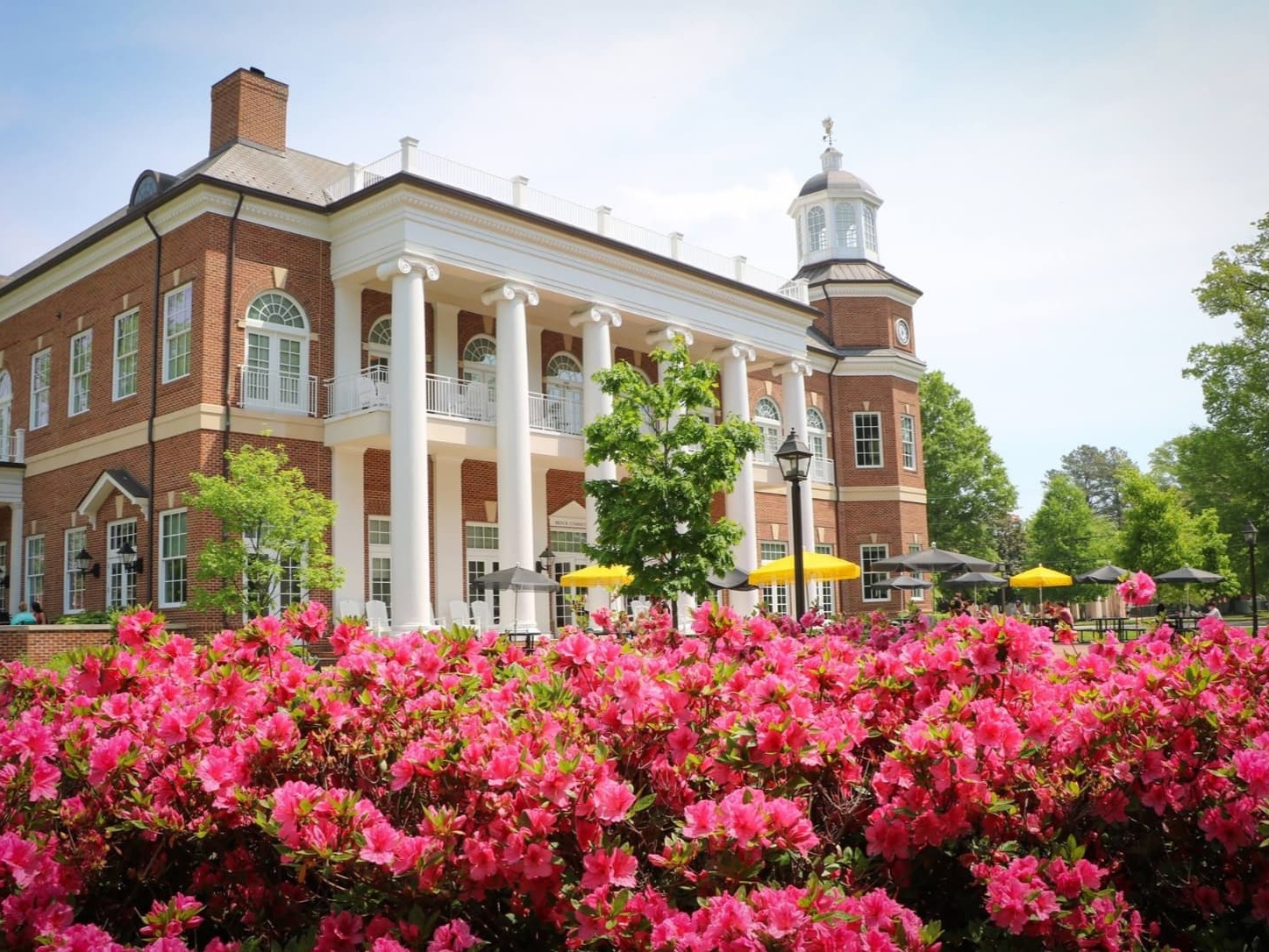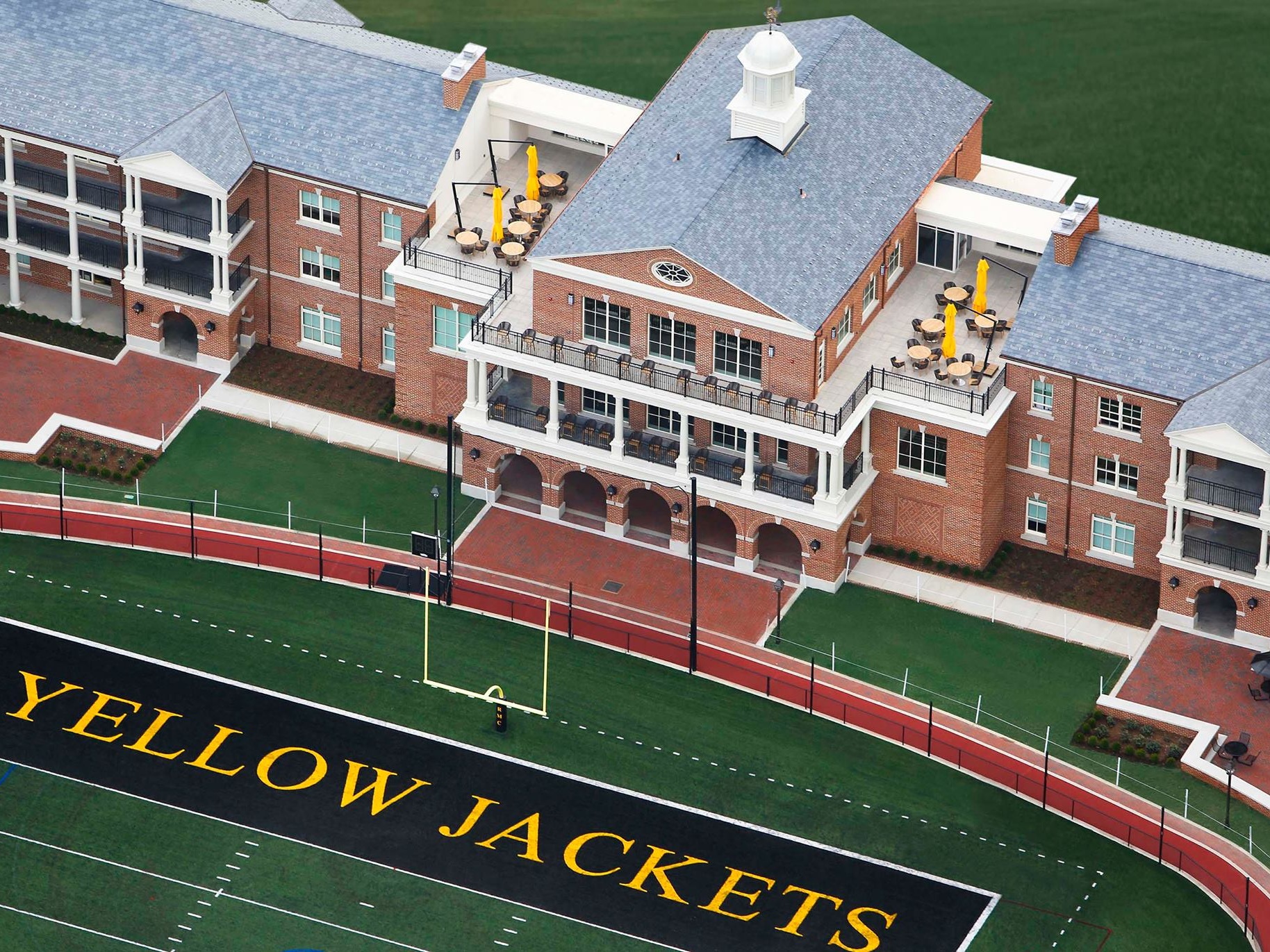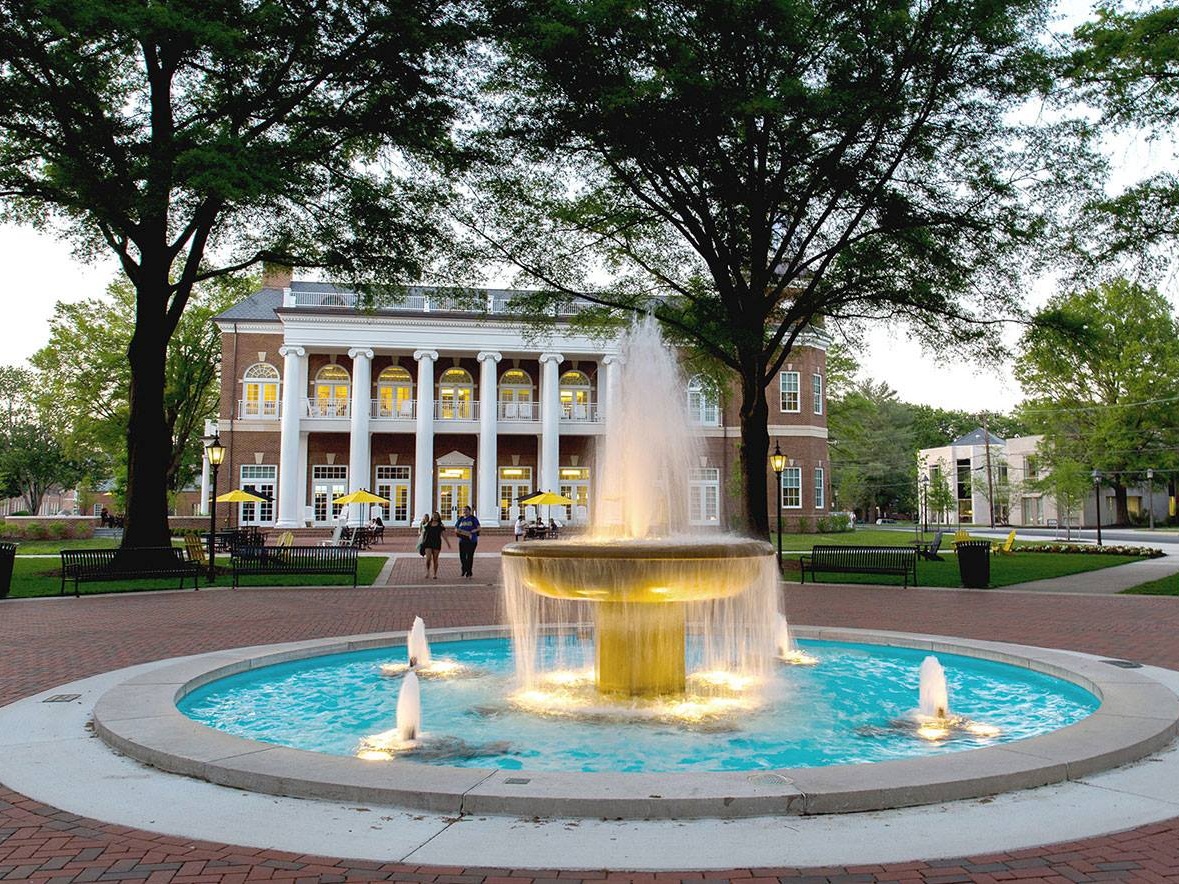RANDOLPH-MACON COLLEGE
ABOUT
Ashland is home to Randolph-Macon College, a private, coeducational liberal arts and sciences college. R-MC’s 125-acre campus is located right along the tracks in Downtown Ashland. The College enrolls nearly 1,500 undergraduate students and has hundreds of student organizations, a robust athletic program, and active Greek life.
Downtown Ashland proudly “backs the jackets,” with many businesses displaying R-MC flags and offering special discounts to faculty, students and their families.
For information on planning your visit, campus tours and more, please see Randolph-Macon College’s website.
Randolph-Macon College prior to 1880. (photo: Ashland Museum)
R-MC’s athletic field, present. (photo: Randolph-Macon College)
HISTORY
Randolph-Macon College was founded in 1830 in Boydton, Virgina, near the North Carolina border and about 85 miles southeast of Lynchburg. The College was founded by the Virginia Conference of the Methodist Church. The names of John Randolph, a Virginia statesman, and Nathaniel Macon, a North Carolina statesman, were given to the college to dispel the notion that the school was to be only a sectarian one. Neither man was a Methodist.
During the Civil War, the railroad lines to Boydton were destroyed. Looking for a site that would be more accessible to potential students, the trustees of Randolph-Macon College found that the Ashland Hotel, which was adjacent to a major north/south rail line, was for sale, and they purchased the defunct resort. They moved the college to Ashland and began the first classes in the new location on October 1, 1868.
Brock Commons at R-MC. (photo: Randolph-Macon College)
EVENTS AT R-MC
R-MC offers a variety of sporting events, art exhibits, lectures, performances and more, which are free and open to the public, unless otherwise noted. For more information and a schedule of events, please see the linked calendars below.
NEED TO KNOW
114 College Avenue
Ashland, Virginia
(804) 752-7200
rmc.edu
email: admissions@rmc.edu
GOOD TO KNOW
Information sessions and tours are offered: Monday through Friday at 11:00 a.m. & 2:30 p.m. and most Saturdays at 11:00 a.m.
The R-MC calendar of events includes theatre, music and film as well as a full schedule of visiting artists, writers, scholars, leaders, and public figures.
Three buildings on the campus are listed on the National Register of Historic Places.






